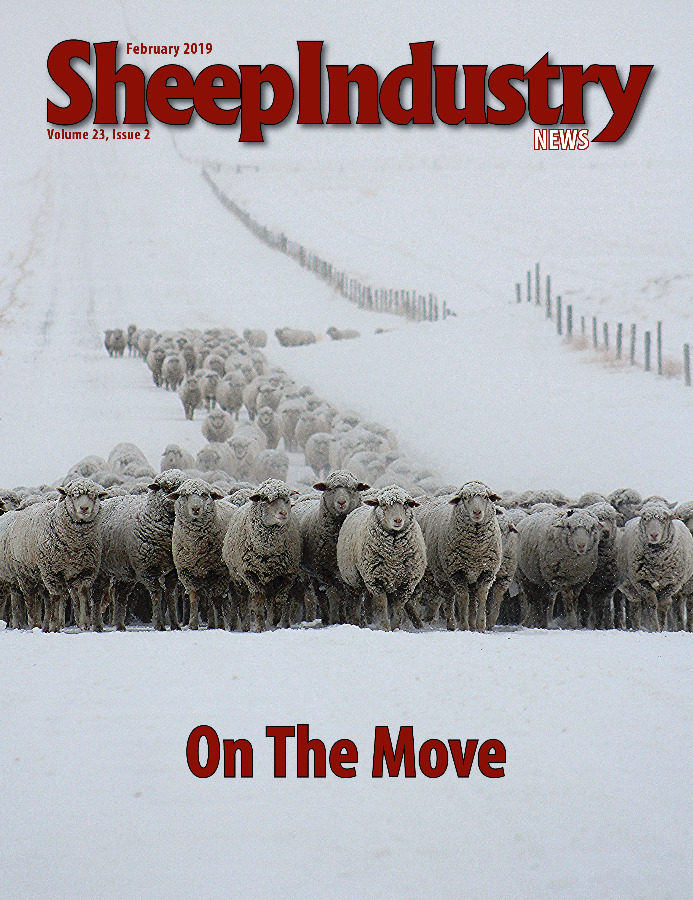PLC Looks Back on Changes in Federal Land Policy in 2018
BOB SKINNER
Public Lands Council President
At the beginning of 2018 – following a successful first year working with the new administration – the Public Lands Council outlined its priorities: modernizing the Endangered Species Act, enacting critical reforms to the National Environmental Policy Act and working to correct chronic problems that have plagued federal grazing regulations since the bad old days of Bruce Babbitt and “Range Reform ’94.”
Working with Congress, the Trump administration and in federal court, we made significant progress on these issues and many more. Here is a look at our top accomplishments in the last 365 days.
ENDANGERED SPECIES ACT
PLC has been a strong voice in the administration’s proposed rulemaking to bring common sense back to implementation of ESA. Following the publication of three comprehensive proposed rules this summer targeting Sections 4 and 7 of the act, final rules are expected soon to reform how species are listed, critical habitat designations and interagency consultations.
On the statutory front, we were encouraged by the efforts of Senate Environment and Public Works Chairman John Barrasso (Wyo.), who developed draft legislation that incorporated the recommendations of the Western Governors’ Association’s ESA Initiative. While Barrasso’s legislation did not advance in 2018, the finished product was a huge step forward, and demonstrates that bipartisan reforms are indeed possible. We will continue to stay engaged on this issue in the new divided Congress.
NATIONAL ENVIRONMENTAL POLICY ACT
Another bright spot came in the form of a new rulemaking effort from the White House Council on Environmental Quality regarding NEPA implementation across the entire federal government.
Using recommendations crafted by a special PLC working group made up of affiliates from across the West, we worked with the Trump administration to ensure key decisionmakers understood how NEPA has been abused in the past, and how this has impacted federal lands ranchers.
As I write this, the government is shutdown, placing any immediate progress on hold. However, once funded, our team expects a final rulemaking quickly. That rulemaking could make progress on categorical exclusions, recognition of socioeconomic impact in decisions, and other streamlined changes benefiting the industry.
GRAZING REGULATIONS
Early in the year, PLC leadership organized a working group to examine ways to repair the tremendous damage done to the federal grazing system through past initiatives like Range Reform ’94 during Babbitt’s tenure at the Department of the Interior.
The results the agency produced will help key decisionmakers at the federal level understand the detrimental impacts of past policy decisions, bringing awareness to the need to modernize grazing regulations. This truly was a showing of PLC’s grassroots, with producer voices contributing from every state in the West. We are encouraged by the prospects of movement on this critical front in the year to come.
SAGE GROUSE
The year 2018 also saw major progress in the push to amend the BLM’s 2015 Greater Sage-Grouse plans (with the U.S. Forest Service close behind). Our message was simple: focus on working lands conservation and the importance of ongoing state and local management of the bird. Those elements were reflected in the new amended plans released by BLM in December 2018, and hopefully will carry through to the USFS plans, which will be finalized in 2019.
While we didn’t get everything we wanted, the move away from draconian grass height requirements and grazing reductions and toward wildfire fuels management bodes well for a better operating environment moving forward for producers in sage grouse country.
FERAL HORSE AND BURRO MANAGEMENT
Feral horse and burro populations continue to explode across the West, and PLC beat the drum on the issue with agencies, coalitions and the public. Our team was at the table with the conservation community, sportsmen groups and other industries to explore solutions. We were also instrumental in advising the Department of the Interior on strategies to curb the unsustainable growth.
Our voice will continue to be a dominate one in calling for all options to remain on the table to deal with this crisis, including permanent sterilization, humane euthanasia and sale without limitation.
WILDFIRE
Fire spread far and wide in the western United States throughout 2018. We amplified our messaging, raising awareness to devastation felt by communities burdened by fire. Congress responded, putting an end to the practice of “fire borrowing” that diverted funds for forest health and fire prevention programs.
The administration also took note of the crisis, issuing an executive order just last month promoting active management of forests, rangelands and other federal lands to improve rangeland conditions and reduce wildfire risk.
With this progress, we continue to pressure all levels of government for wildfire reform, including expanded categorical exclusions and bills such as Rep. Bruce Westerman’s (Ark.) Resilient Federal Forests Act (pieces of which were passed in other bills during the 115th Congress) among others.
While 2018 was a year of progress for our industry, our work is far from done. Now is the time to hit the gas and close these deals while the opportunities are available. We cannot get distracted by changed leadership or a divided Congress. This will require collaboration with friends across the aisle and will require we continue to work strategically with leaders in Washington and the West – a task I believe we are ready for.
America’s public lands ranchers show up, voice their opinion and share their knowledge with policymakers. It’s because of you that we have achieved such instrumental wins in 2018, and it will be because of you we will continue to see progress in 2019.


